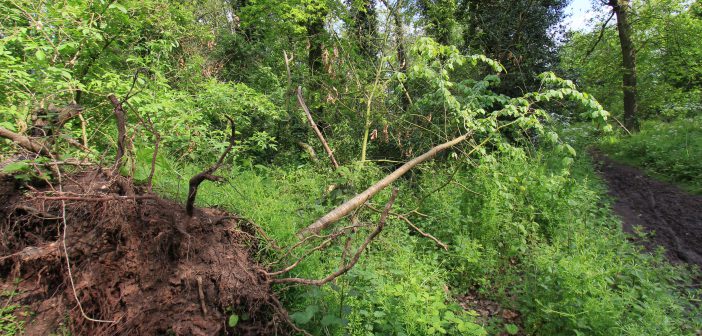The tree on the right is a wild cherry which, although it has managed to use its reserves to come into leaf this spring, was completely uprooted when its larger neighbour fell last winter. (You can see the roots of the larger tree sticking up on the left of the photo.) The Friends assessed the chances of disengaging the roots and re-planting, but came to the conclusion that this was not a viable option.
The large tree next to it will be missed. It’s the large and handsome sweet chestnut (the only one in the wood) which stood mid-way along the main path, on the left as you walk south. This tree looked unwell last summer when the lowermost branch died back. (The dead leaves on this branch are still attached.) But as autumn passed the branches higher up still seemed healthy.
Sweet chestnuts were first recorded in the UK in the 12th century. In recent years they have been under threat from the oriental chestnut gall wasp and the chestnut blight fungus. Our tree does not seem to have signs of either of these. It was heavily covered with ivy, which adds weight to the tree and can increase the risk of falling in a weakened specimen.



